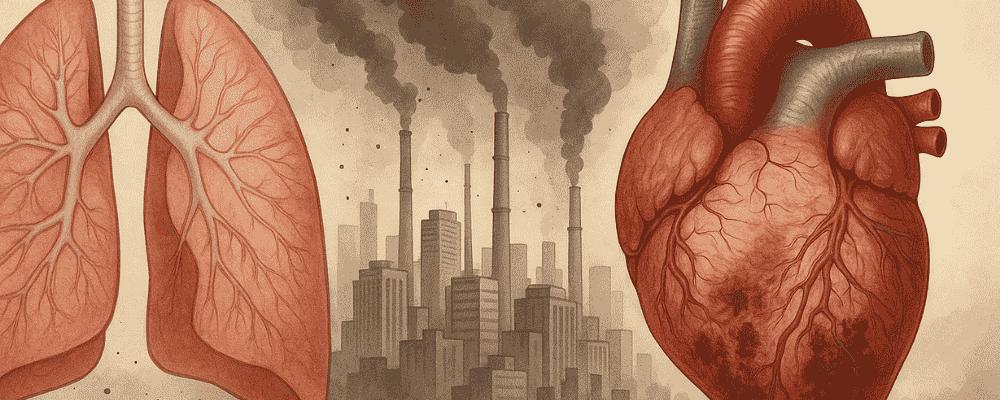Even low air pollution linked to heart scarring
OAK BROOK, Ill., July 1, 2025 – A new study using advanced cardiac imaging has found that long-term exposure to fine air pollution particles, even at levels considered safe, is associated with subtle scarring of the heart muscle. The research raises questions about whether current global air quality guidelines are sufficient to protect cardiovascular health.
The study, published in the journal Radiology, analyzed 694 adults using cardiac MRI, focusing on a technique known as T₁ mapping, which detects diffuse myocardial fibrosis—an early sign of heart muscle damage. Participants included healthy individuals and those with dilated cardiomyopathy. Researchers compared MRI findings with participants’ long-term exposure to PM₂.₅—tiny airborne particles less than 2.5 microns in diameter.
They found that higher exposure to PM₂.₅ was significantly associated with greater signs of heart tissue scarring. This effect was observed across all participants, regardless of existing heart disease. Women, smokers, and people with high blood pressure appeared particularly vulnerable.
Lead researcher Dr. Kate Hanneman, a radiologist at the University of Toronto, said the findings show that air pollution can directly affect heart structure, even in people without symptoms. “We wanted to understand what drives this increased risk at the tissue level,” she said.
Previous research has linked PM₂.₅ exposure to increased risks of heart attack and stroke, but this study offers some of the clearest evidence to date that pollution can silently damage heart muscle well before symptoms or disease appear. It also suggests that exposure considered acceptable under current regulatory limits may still be harmful.
The researchers say their findings highlight a need for stricter air quality standards, particularly in urban areas. They also urge clinicians to consider environmental exposure in their assessment of heart disease risk, especially for patients living in high-pollution regions or working in outdoor or industrial settings.
The study underscores the growing role of imaging technologies like MRI in detecting early organ damage tied to environmental and lifestyle factors. It also adds to growing evidence that clean air is essential not just for lung health, but for heart health too.


